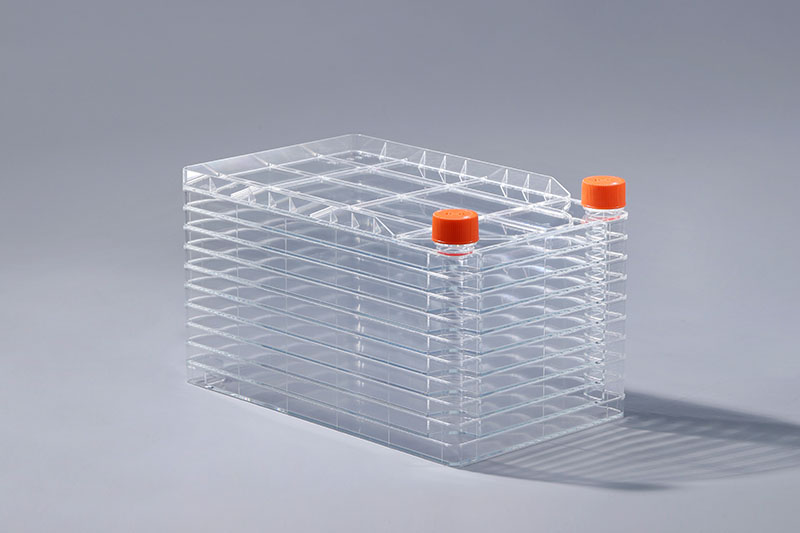je spotrebný materiál pre bunkovú kultúru vyrobený z polystyrénových (PS) surovín. Prijíma dizajn viacvrstvovej štruktúry. Bežné špecifikácie zahŕňajú 1 vrstvu, 2 vrstvy, 5 vrstiev, 10 vrstiev a 40 vrstiev. Prispôsobte počet vrstiev podľa potreby. Aký výrobný proces sa teda používa pre túto špeciálnu štruktúru spotrebného materiálu? Proces vstrekovania, ktorý sa používa v bunkovej továrni, zahŕňa najmä nasledujúce kroky:cell factory
1. Proces predlisovania:
Proces predlisovania spočíva v tom, že sa plastový materiál zahrieva, prepravuje, zhutňuje, strihá, mieša a homogenizuje vo valci, aby sa materiál premenil zo skleneného stavu na viskózny tekutý stav, aby sa spĺňať požiadavky na vstrekovanie.
2. Proces vstrekovania: V štádiu plnenia vstrekovaním skrutka vstrekuje taveninu v zásobnej komore do dutiny cez dýzu, bežec formy a vtok pod ťah vstrekovacieho valca.
3. Proces kompresie a kompresie:
Pokračujte vo vstrekovaní, aby ste vyplnili objem uvoľnený dielom v dôsledku zmrštenia.
4. Proces chladenia a nastavenia:
Po ukončení udržiavacieho tlaku brána zamrzne. Výrobok prechádza obdobím chladenia a tuhnutia.
5. Proces vysúvania:
Po určitom čase ochladzovania má produkt určitú tuhosť a pevnosť. Diel sa vysunie zo vstrekovacej formy vyhadzovacím kolíkom formy.
Po dokončení výroby bunkovej továrne je potrebné každú vrstvu zmontovať a potom môže opustiť továreň až po rôznych skúškach ako je tesnosť a sterilita. Aby sa zabezpečilo, že bunky môžu lepšie priľnúť, tento spotrebný materiál musí byť tiež ošetrený TC na povrchu, aby sa zaviedli hydrofilné faktory.
After the product has been cooled for a period of time, it has a certain rigidity and strength. The part is ejected from the injection mold by the ejector pin of the mold.
After the production of the cell factory is completed, each layer needs to be assembled, and then it can only leave the factory after various tests such as tightness and sterility. In order to ensure that cells can adhere better, this consumable also needs to be treated with TC on the surface to introduce hydrophilic factors.
The FAI climbed 5.9 percent year-on-year in the first 11 months of 2018, quickening from the 5.7-percent growth in Jan-Oct, the National Bureau of Statistics (NBS) said Friday in an online statement.
The key indicator of investment, dubbed a major growth driver, hit the bottom in August and has since started to rebound steadily.
In the face of emerging economic challenges home and abroad, China has stepped up efforts to stabilize investment, in particular rolling out measures to motivate private investors and channel funds into infrastructure.
Friday's data showed private investment, accounting for more than 60 percent of the total FAI, expanded by a brisk 8.7 percent.
NBS spokesperson Mao Shengyong said funds into weak economic links registered rapid increases as investment in environmental protection and agriculture jumped 42 percent and 12.5 percent respectively, much faster than the average.
In breakdown, investment in high-tech and equipment manufacturing remained vigorous with 16.1-percent and 11.6-percent increases respectively in the first 11 months. Infrastructure investment gained 3.7 percent, staying flat. Investment in property development rose 9.7 percent, also unchanged.
 English
English



















































